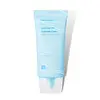What's inside
What's inside
 Key Ingredients
Key Ingredients

 Benefits
Benefits

 Concerns
Concerns

 Ingredients Side-by-side
Ingredients Side-by-side

Water
Skin ConditioningGlycerin
HumectantNiacinamide
SmoothingButylene Glycol
HumectantHydrogenated Polydecene
Emollient1,2-Hexanediol
Skin ConditioningCetearyl Alcohol
EmollientCetearyl Olivate
Cetyl Ethylhexanoate
EmollientSorbitan Olivate
EmulsifyingBeeswax
Emulsion StabilisingVinyldimethicone
Anhydroxylitol
HumectantCitric Acid
BufferingEthylhexylglycerin
Skin ConditioningGlyceryl Stearate
EmollientHyaluronic Acid
HumectantHydrolyzed Cicer Seed Extract
Skin ProtectingHydrolyzed Hyaluronic Acid
HumectantPancratium Maritimum Extract
BleachingPentasodium Pentetate
Propanediol
SolventRhododendron Chrysanthum Leaf Extract
MaskingSodium Hyaluronate
HumectantSodium Polyacryloyldimethyl Taurate
Emulsion StabilisingTocopherol
AntioxidantTricholoma Matsutake Extract
Skin ConditioningTrideceth-10
CleansingXylitol
HumectantXylitylglucoside
HumectantWater, Glycerin, Niacinamide, Butylene Glycol, Hydrogenated Polydecene, 1,2-Hexanediol, Cetearyl Alcohol, Cetearyl Olivate, Cetyl Ethylhexanoate, Sorbitan Olivate, Beeswax, Vinyldimethicone, Anhydroxylitol, Citric Acid, Ethylhexylglycerin, Glyceryl Stearate, Hyaluronic Acid, Hydrolyzed Cicer Seed Extract, Hydrolyzed Hyaluronic Acid, Pancratium Maritimum Extract, Pentasodium Pentetate, Propanediol, Rhododendron Chrysanthum Leaf Extract, Sodium Hyaluronate, Sodium Polyacryloyldimethyl Taurate, Tocopherol, Tricholoma Matsutake Extract, Trideceth-10, Xylitol, Xylitylglucoside
Water
Skin ConditioningButylene Glycol
HumectantGlycerin
HumectantCaprylic/Capric Triglyceride
MaskingButyrospermum Parkii Butter
Skin ConditioningPolyglyceryl-10 Distearate
EmulsifyingStearyl Alcohol
EmollientCetyl Alcohol
EmollientGlyceryl Stearate
EmollientStearic Acid
Cleansing1,2-Hexanediol
Skin ConditioningPhenyl Trimethicone
Skin ConditioningCeramide NP
Skin ConditioningCaprylyl Glycol
EmollientAcrylates/C10-30 Alkyl Acrylate Crosspolymer
Emulsion StabilisingArginine
MaskingPhytosterols
Skin ConditioningDisodium EDTA
Sodium Hyaluronate
HumectantPolyphosphorylcholine Glycol Acrylate
Beta-Glucan
Skin ConditioningAsiatic Acid
Skin ConditioningAsiaticoside
AntioxidantMadecassic Acid
Skin ConditioningCitrus Aurantium Bergamia Fruit Oil
MaskingLimonene
PerfumingLinalool
PerfumingWater, Butylene Glycol, Glycerin, Caprylic/Capric Triglyceride, Butyrospermum Parkii Butter, Polyglyceryl-10 Distearate, Stearyl Alcohol, Cetyl Alcohol, Glyceryl Stearate, Stearic Acid, 1,2-Hexanediol, Phenyl Trimethicone, Ceramide NP, Caprylyl Glycol, Acrylates/C10-30 Alkyl Acrylate Crosspolymer, Arginine, Phytosterols, Disodium EDTA, Sodium Hyaluronate, Polyphosphorylcholine Glycol Acrylate, Beta-Glucan, Asiatic Acid, Asiaticoside, Madecassic Acid, Citrus Aurantium Bergamia Fruit Oil, Limonene, Linalool
Ingredients Explained
These ingredients are found in both products.
Ingredients higher up in an ingredient list are typically present in a larger amount.
1,2-Hexanediol is a synthetic liquid and another multi-functional powerhouse.
It is a:
- Humectant, drawing moisture into the skin
- Emollient, helping to soften skin
- Solvent, dispersing and stabilizing formulas
- Preservative booster, enhancing the antimicrobial activity of other preservatives
Butylene Glycol (or BG) is used within cosmetic products for a few different reasons:
Overall, Butylene Glycol is a safe and well-rounded ingredient that works well with other ingredients.
Though this ingredient works well with most skin types, some people with sensitive skin may experience a reaction such as allergic rashes, closed comedones, or itchiness.
Learn more about Butylene GlycolGlycerin is already naturally found in your skin. It helps moisturize and protect your skin.
A study from 2016 found glycerin to be more effective as a humectant than AHAs and hyaluronic acid.
As a humectant, it helps the skin stay hydrated by pulling moisture to your skin. The low molecular weight of glycerin allows it to pull moisture into the deeper layers of your skin.
Hydrated skin improves your skin barrier; Your skin barrier helps protect against irritants and bacteria.
Glycerin has also been found to have antimicrobial and antiviral properties. Due to these properties, glycerin is often used in wound and burn treatments.
In cosmetics, glycerin is usually derived from plants such as soybean or palm. However, it can also be sourced from animals, such as tallow or animal fat.
This ingredient is organic, colorless, odorless, and non-toxic.
Glycerin is the name for this ingredient in American English. British English uses Glycerol/Glycerine.
Learn more about GlycerinGlyceryl Stearate is a mix of glycerin and stearic acid.
It is used to stabilize the mixing of water and oil ingredients. By preventing these ingredients from separating, it can help elongate shelf life. It can also help thicken the product's texture.
As an emollient, it helps soften skin and supports barrier-replenishing ingredients.
In cosmetics, Glyceryl Stearate is often made from vegetable oils or synthetically produced.
This ingredient may not be fungal-acne safe
Fun fact: The human body also creates Glyceryl Stearate naturally.
Learn more about Glyceryl StearateSodium Hyaluronate is hyaluronic acid's salt form. It is commonly derived from the sodium salt of hyaluronic acid.
Like hyaluronic acid, it is great at holding water and acts as a humectant. This makes it a great skin hydrating ingredient.
Sodium Hyaluronate is naturally occurring in our bodies and is mostly found in eye fluid and joints.
These are some other common types of Hyaluronic Acid:
Learn more about Sodium HyaluronateWater. It's the most common cosmetic ingredient of all. You'll usually see it at the top of ingredient lists, meaning that it makes up the largest part of the product.
So why is it so popular? Water most often acts as a solvent - this means that it helps dissolve other ingredients into the formulation.
You'll also recognize water as that liquid we all need to stay alive. If you see this, drink a glass of water. Stay hydrated!
Learn more about Water